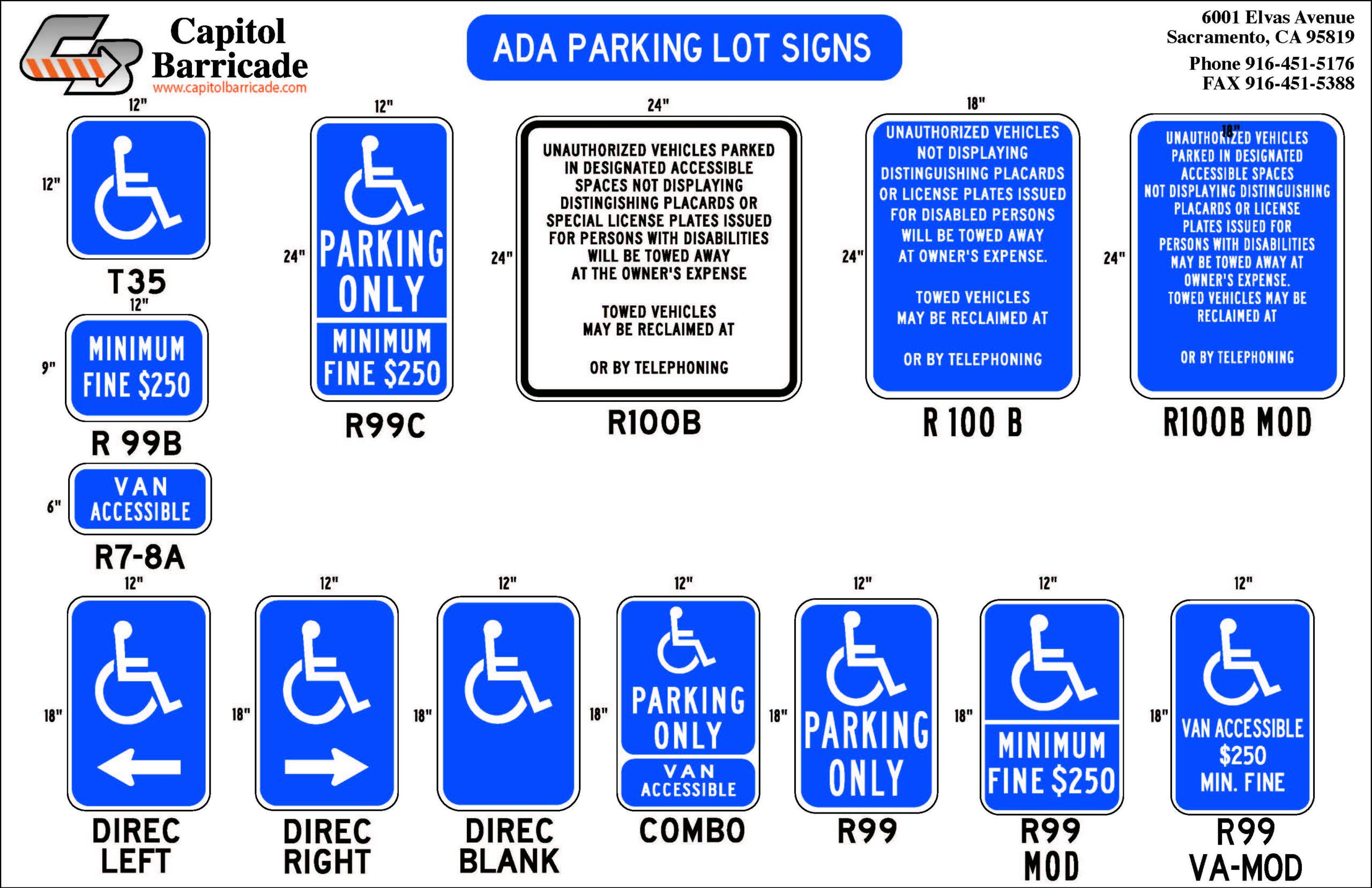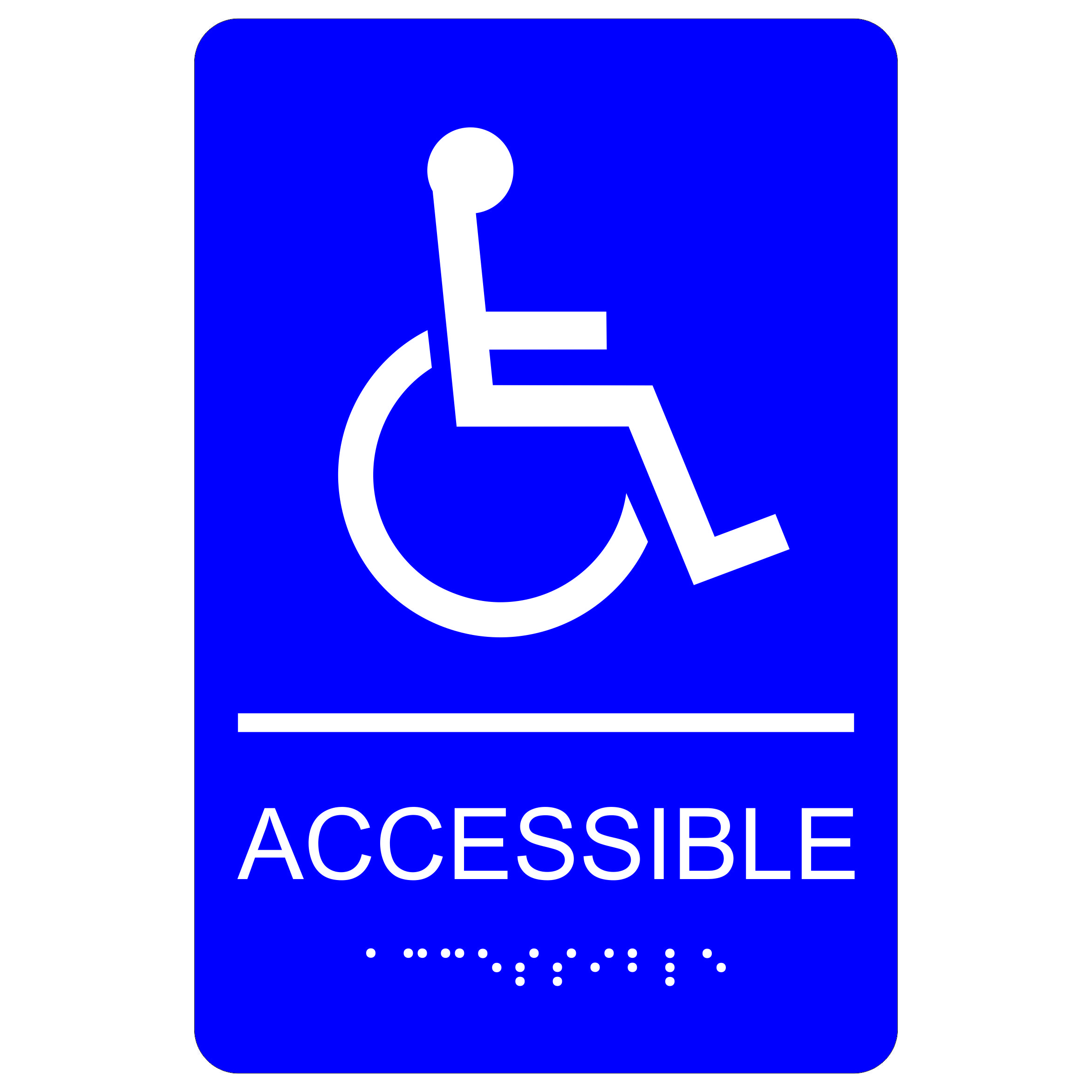Discovering the Secret Attributes of ADA Indications for Enhanced Accessibility
In the realm of accessibility, ADA signs function as silent yet effective allies, making certain that rooms are inclusive and accessible for people with impairments. By integrating Braille and tactile components, these indicators break barriers for the visually damaged, while high-contrast color design and readable typefaces accommodate diverse aesthetic demands. Their strategic placement is not arbitrary yet rather a computed effort to assist in smooth navigation. Yet, past these functions exists a much deeper narrative concerning the development of inclusivity and the ongoing commitment to developing equitable rooms. What much more could these indicators indicate in our pursuit of global accessibility?
Importance of ADA Compliance
Guaranteeing conformity with the Americans with Disabilities Act (ADA) is essential for promoting inclusivity and equal gain access to in public areas and offices. The ADA, established in 1990, mandates that all public facilities, employers, and transport solutions suit individuals with impairments, ensuring they delight in the same rights and possibilities as others. Compliance with ADA requirements not just fulfills lawful obligations however also enhances an organization's online reputation by demonstrating its commitment to variety and inclusivity.
One of the vital facets of ADA compliance is the implementation of obtainable signage. ADA indicators are made to make sure that individuals with handicaps can easily browse via buildings and areas.
Moreover, sticking to ADA laws can alleviate the risk of prospective fines and legal repercussions. Organizations that fall short to adhere to ADA guidelines might deal with charges or claims, which can be both damaging and financially difficult to their public image. Therefore, ADA compliance is important to promoting a fair environment for every person.
Braille and Tactile Aspects
The incorporation of Braille and responsive components into ADA signs embodies the principles of access and inclusivity. It is commonly placed below the equivalent text on signage to make sure that individuals can access the information without visual support.
Tactile elements extend beyond Braille and consist of raised characters and signs. These parts are developed to be noticeable by touch, permitting individuals to identify room numbers, washrooms, departures, and other vital locations. The ADA establishes particular standards pertaining to the dimension, spacing, and positioning of these tactile elements to enhance readability and ensure consistency across different settings.

High-Contrast Color Design
High-contrast shade systems play a pivotal duty in improving the visibility and readability of ADA signs for individuals with visual impairments. These plans are vital as they take full advantage of the difference in light reflectance in between message and history, guaranteeing that indicators are quickly noticeable, also from a distance. The Americans with Disabilities Act (ADA) mandates using specific shade contrasts to accommodate those with restricted vision, making it a critical facet of compliance.
The efficiency of high-contrast colors hinges on their capability to attract attention in numerous lighting conditions, consisting of check my reference dimly lit atmospheres and areas with glow. Normally, dark message on a light background or light text on a dark background is utilized to attain optimal contrast. As an example, black message on a yellow or white history offers a plain aesthetic difference that assists in quick recognition and understanding.

Legible Fonts and Text Dimension
When considering the layout of ADA signs, the option of clear font styles and suitable text dimension can not be overemphasized. The Americans with Disabilities Act (ADA) mandates that font styles should be sans-serif and not italic, oblique, script, highly attractive, or of uncommon form.
According to ADA standards, the minimum message height need to be 5/8 inch, and it must raise proportionally with watching range. Uniformity in message size adds to a natural visual experience, assisting individuals in browsing environments successfully.
Furthermore, spacing in between letters and lines is indispensable to clarity. Adequate spacing stops characters from showing up crowded, enhancing readability. By adhering to these criteria, designers can considerably improve ease of access, making certain that signage serves its desired purpose for all people, despite their visual capacities.
Effective Placement Approaches
Strategic placement of ADA signage is vital for taking full advantage of availability and making certain compliance with lawful criteria. ADA standards state that signs should be installed at a height in between 48 to 60 inches from the ground to guarantee they are within the line of view for both standing and seated individuals.
Furthermore, signs have to be put adjacent to the lock side of doors to enable very easy recognition before entrance. Consistency in indication placement throughout a facility boosts predictability, lowering confusion and boosting general individual experience.

Verdict
ADA indicators play an important duty in promoting availability by incorporating features that resolve the requirements of people with handicaps. Incorporating Braille and tactile aspects makes certain important information comes to the aesthetically damaged, while high-contrast shade schemes and clear sans-serif typefaces enhance visibility across different illumination problems. Effective positioning techniques, such try this as proper placing elevations and strategic areas, even more assist in navigating. These aspects jointly promote a comprehensive setting, underscoring the importance of ADA compliance in guaranteeing equal gain access to for all.
In the world of access, ADA indications serve as silent yet effective allies, ensuring that areas are accessible and comprehensive for people with disabilities. The ADA, passed in 1990, mandates that all public facilities, employers, and transportation solutions suit individuals with disabilities, guaranteeing they delight in the same legal rights and opportunities as others. ADA Signs. ADA indicators are made to guarantee that individuals with impairments can conveniently browse with structures and areas. ADA standards stipulate that indicators ought to be placed at an elevation between 48 to 60 inches from the ground to ensure they are within the line of view for both standing and seated people.ADA signs play an important function in advertising accessibility by incorporating attributes that deal with the requirements of use this link individuals with handicaps